Locust Swarms in Africa: Everything You Need to Know
Locust swarms are currently plaguing East Africa and South Asia, putting millions of people in danger.
Updated March 28 2020, 11:41 a.m. ET
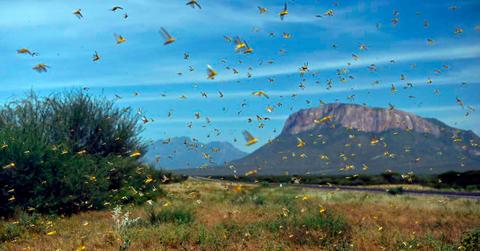
Locusts swarm from ground vegetation as people approach at Lerata village, near Archers Post in Samburu county, approximately 300 kilomters (186 miles) north of kenyan capital, Nairobi on January 22, 2020.
The COVID-19 pandemic isn’t the Earth’s only plague right now. In certain areas of East Africa and South Asia, unruly locust swarm infestations are putting millions of people in danger.
And yes, the climate crisis has something to do with it.
Here’s everything you need to know about the deadly locust swarms plaguing millions of people.
What Are Locust Swarms?
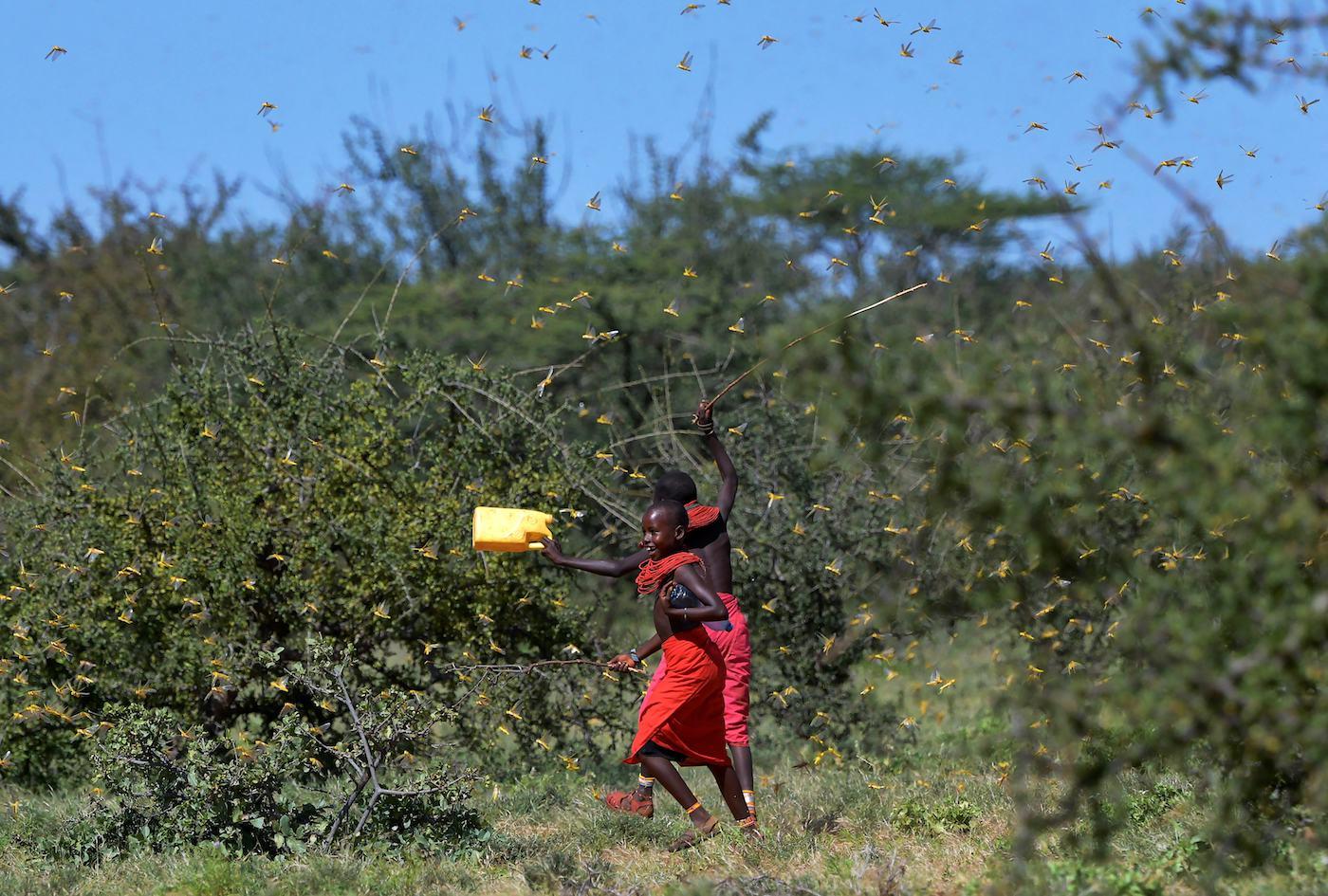
Invading locusts spring into flight from ground vegetation as young girls in traditional Samburu-wear run past to their cattle at Larisoro village near Archers Post, on January 21, 2020.
The locusts causing the current locust swarm crisis are desert locusts, a relative of grasshoppers. But unlike grasshoppers, who stay on the ground, desert locusts swarm, meaning they fly around in large groups.
Locust swarms range from less than 1 square kilometer (0.39 square mile) to several hundred square kilometers in size, with populations reaching up to 80 million locust adults per each square kilometer of a swarm, as per the United Nations Food and Agriculture Organization (FAO). Some of the swarms are the size of major cities, according to the AP. Additionally, desert locusts are migratory, and can travel long distances — up to 100 miles a day, according to CNN.
Locust Swarms in Africa
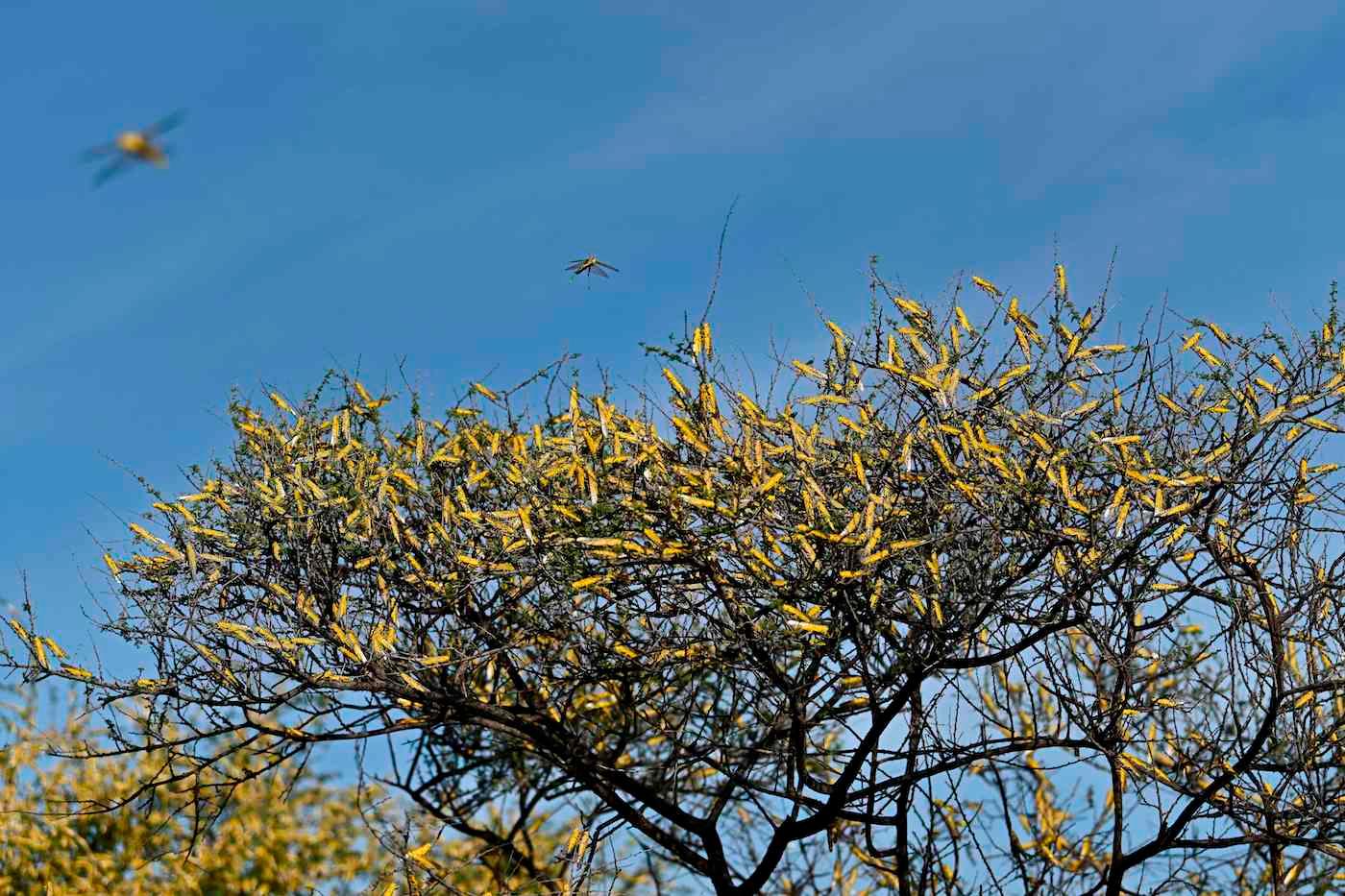
A swarm of locusts aggregates on the canopies of shrubs at Lerata village, near Archers Post in Samburu county, approximately 300 kilomters (186 miles) north of Kenyan capital, Nairobi on January 22, 2020.
For the past few months, hundreds of billions — yes, hundreds of billions — of locusts have been swarming around the world, primarily in East Africa. As you can see in the above photos, the swarms are massive, and like something out of a horror movie.
The hungry locusts are putting food security at risk, meaning the farmers who rely on the profits from those crops and the locals who rely on those crops for nourishment are in danger. This also puts the local economies at risk. According to Wired, the current locust swarms are the worst Kenya has seen in 70 years.
What Caused the Locust Swarms?
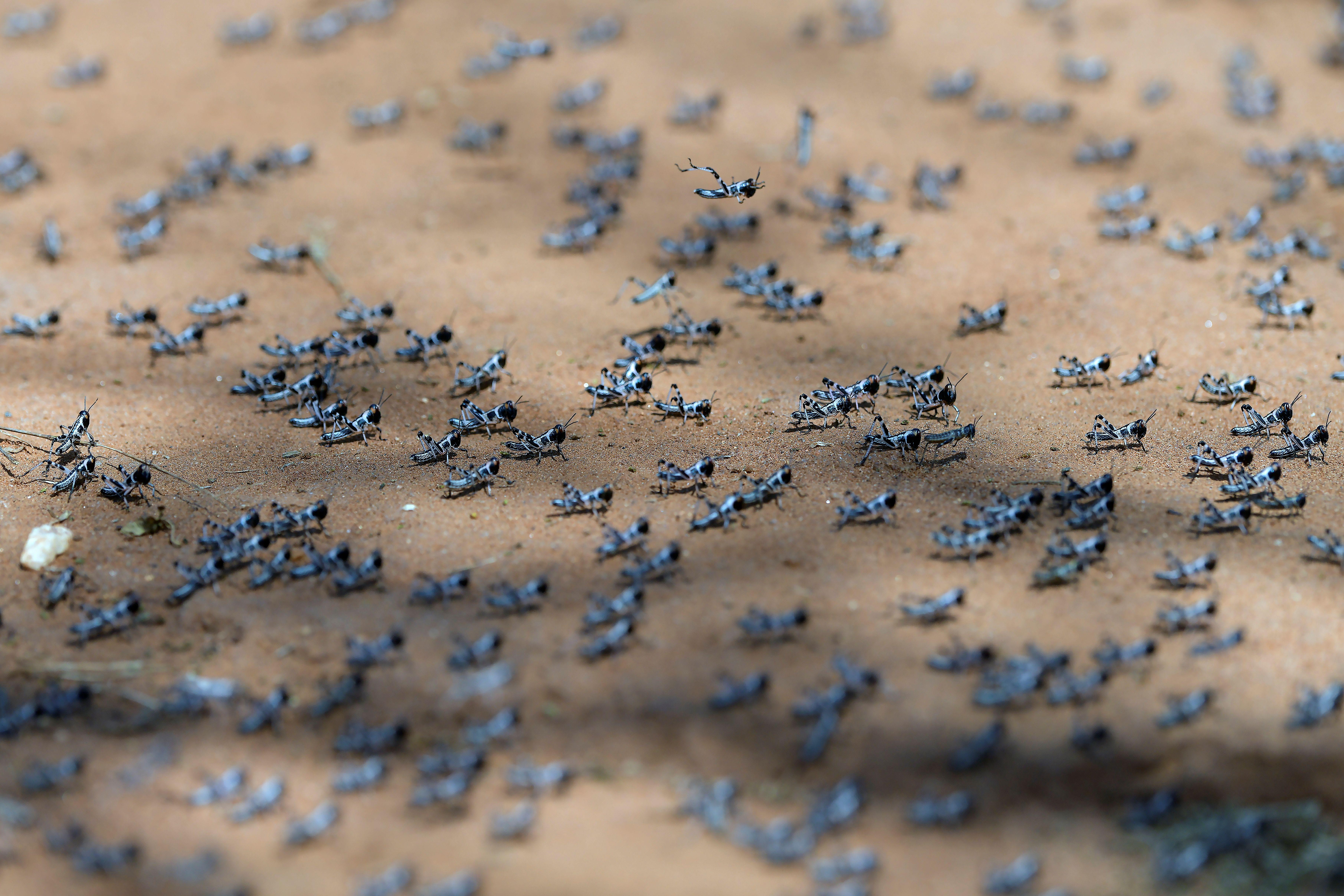
A picture taken on February 25, 2020 at a hatch site near Isiolo town in Isiolo county, eastern Kenya, shows locust nymphs aggregated on the ground.
As noted by The Guardian, experts believe rising global temperatures as part of the climate crisis have unexpectedly provided desert locusts with prime mating (aka breeding) conditions in the Arabian Gulf’s desert. The desert locusts began breeding at extremely high rates, laying eggs in agricultural lands, and migrating across borders. The locusts are continuing to breed quickly, meaning more swarms keep forming.
Are Locusts Eating Crops?
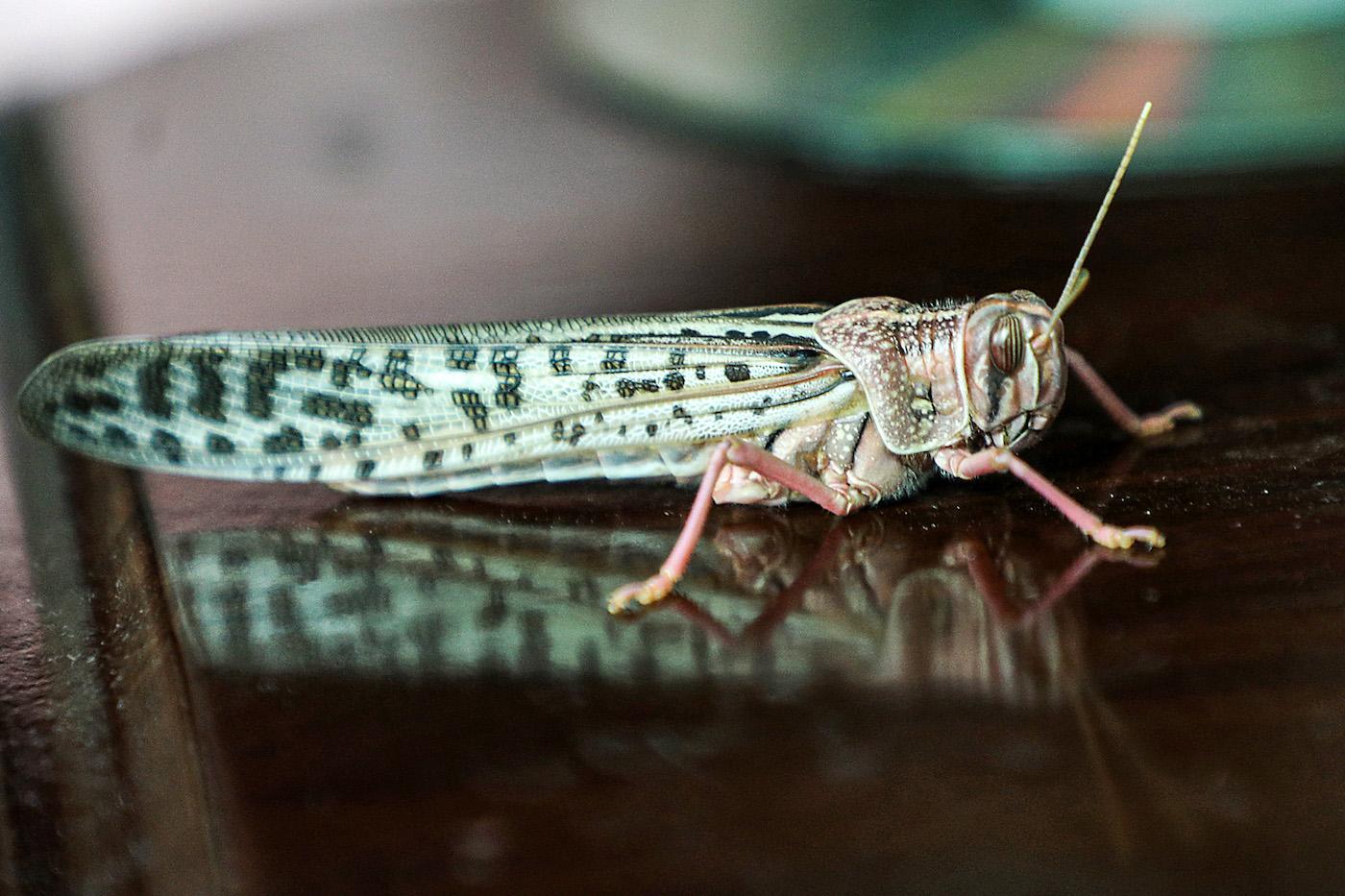
A desert locust is seen inside a house during a swarming event over the Huthi rebel-held Yemeni capital Sanaa on July 28, 2019.
The locusts feed on crops — and lots of them. According to the FAO's locust FAQs, a desert locust can eat up to its own weight (about 2 grams) in food every day. That means a 1 square kilometer swarm that contains about 40 million locusts eats the same amount of food that 35,000 people eat in a day.
With so much food available, it’s estimated that current desert locusts populations could grow 400- to 500-fold by June of this year, according to the BBC and Wired.
Why Are Locust Swarms Dangerous?
Locusts do not directly hurt humans, as per the FAO. However, their appetite for crops that humans eat means farmers’ croplands are suffering; consequentially, it means that millions of people who depend on local crops for food could go hungry. Locust swarms can even lead to famines and starvation, according to National Geographic.
Where in Africa and Asia Are the Locust Swarms?
The current locust swarm is impacting about 10 countries in East Africa and South Asia, according to The Guardian. As FAO added, the swarms are most dramatically impacting Kenya, Ethiopia, and Somalia, which are located in the Horn of Africa; other impacted countries include South Sudan, Yemen, and Iran.
The locust swarms have been able to spread so rapidly thanks to their ability to fly great distances and cross continental borders. So even though the current locust swarms are primarily associated with Africa, several South Asian countries have been hit hard by the locust swarms, including Yemen.
Yemen has been fighting a civil war since 2015, and the war has hindered the country from being able to control locust populations, meaning the situation has gotten particularly out of hand there.
Locust Swarm Videos
As you can see in the above video, locust swarms are utterly horrifying. The locusts are animals who want to live just like any other animal, and they are just following the behaviors that are in their nature (and have been exacerbated by global heating). But unfortunately, that behavior is threatening the lives of millions of people.
Locust Swarms in the Bible
If there ever were a time to use the phrase “of biblical proportions,” it would be now. In the Book of Exodus in the bible, one of the 10 plagues that God allegedly brought onto the Egyptians was locusts. And the timing is eerie — in early April, Jewish people from all around the world will observe Passover and tell the story of the 10 plagues at their Seders.
And as many people on Twitter have noted recently, the world has fought four of the 10 plagues so far this year: locusts, thunderstorms of fire (Australia’s bushfires), flooding (primarily in Yemen), and pestilence (the novel coronavirus outbreak).
How to Control Locust Swarms
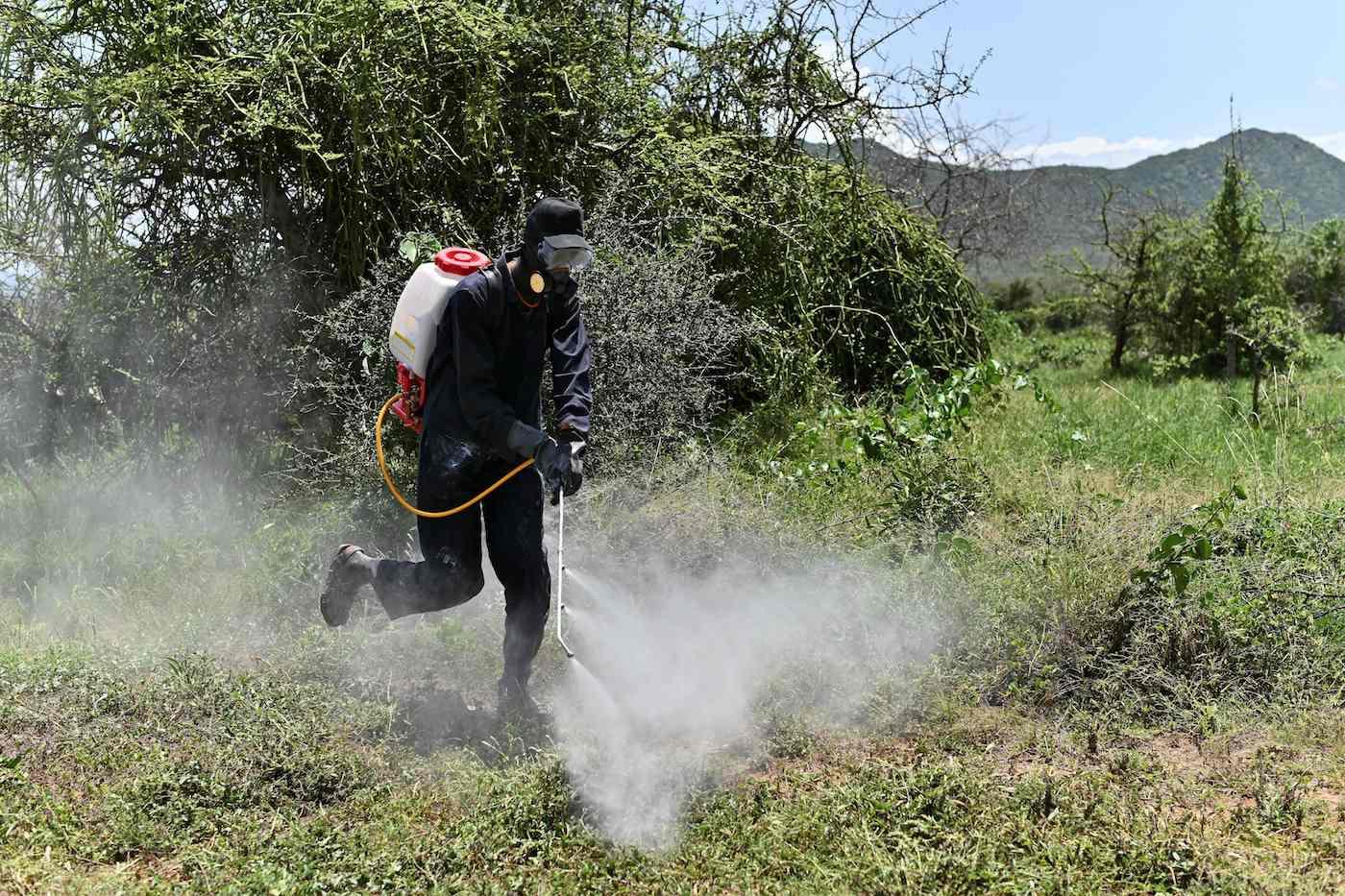
According to the FAO, there are chemicals that can be sprayed to kill locust swarms. Locust population control is left up to each country’s Ministry of Agriculture. For example, in Kenya, crews are being recruited to spray chemicals on locust swarms from small planes, according to the AP.
To effectively control this issue in East Africa, the UN said around $76 million is needed.
However, trying to wipe out the entire locust population is not the solution. As Iain Couzin, director of the Max Planck Institute of Animal Behavior, told Mashable, completely extinguishing locusts could have terrible effects on the environment.
"It's one of the wonders of the natural world," Couzin told Mashable. "We don't want to stop them. We just want to manage them."
Couzin also told the website that the locust swarms mostly affect poor people, so wealthier countries who may have the means to help are often uninterested, since it doesn’t directly impact them.
Preventing Locust Swarms
But simply controlling the current locust swarms is not enough to ensure that the people in the affected regions will never go through this again. To prevent a future locust swarm of this magnitude, we need to keep global temperatures from rising more than 1.5 degrees Celsius (2.7 degrees Fahrenheit) above pre-industrial levels by 2030, as dictated by the Paris Agreement.
To do that, we need to keep fossil fuels in the ground and transition to a renewable energy economy. The higher powers in control of the fossil fuel industry may not yet be feeling the adverse effects of the climate crisis — but millions of people in East Africa and South Asia certainly are.